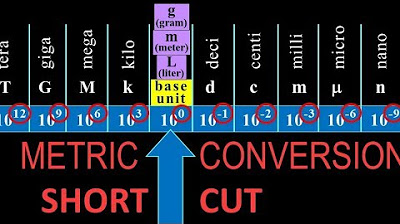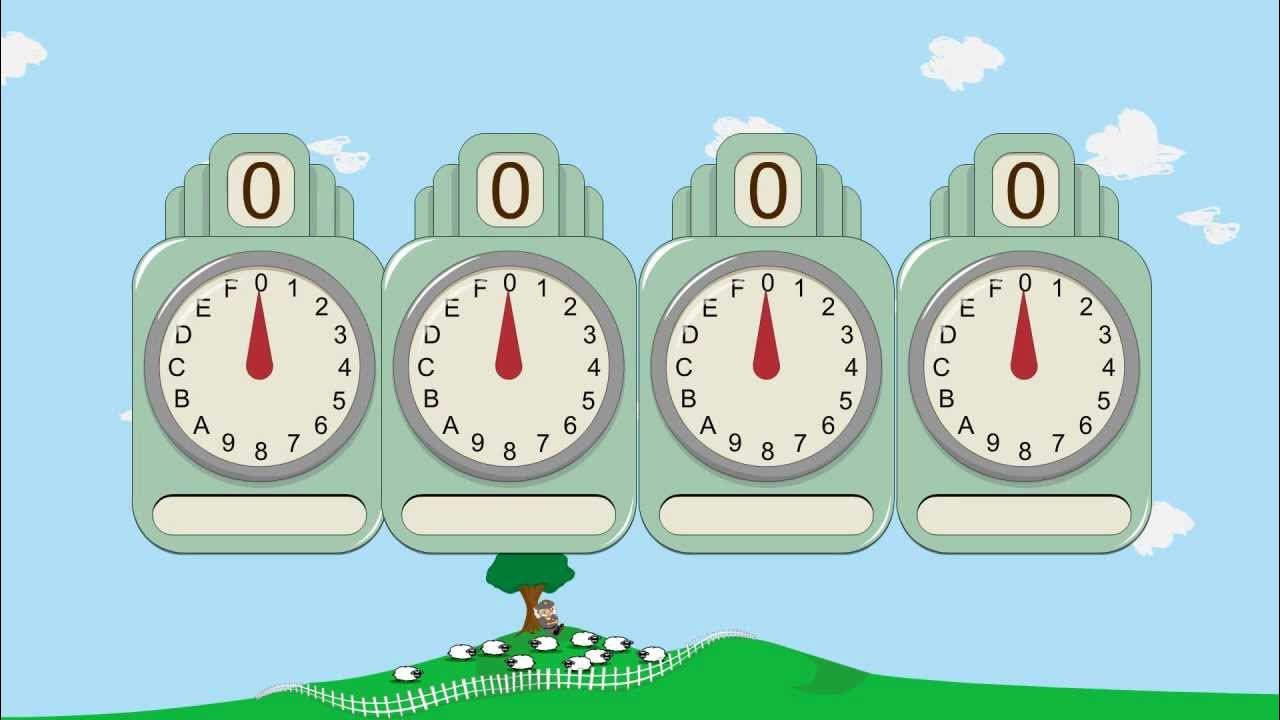The Metric System - Basic Introduction
Summary
TLDRThis educational video script delves into the metric system's prefixes and their corresponding symbols and multipliers. It explains the conversion process between units like kilo, mega, giga, and tera, emphasizing the importance of attaching multipliers to base units for easy conversion. The script provides examples of converting units such as from meters to kilometers and liters to milliliters, illustrating step-by-step calculations. It also touches on less common prefixes and their multipliers, offering a comprehensive guide to mastering unit conversions in the metric system.
Takeaways
- 🔢 The metric system uses prefixes to denote multiples and submultiples of units, with each prefix representing a power of 10.
- 📐 Prefixes like 'deca' (da), 'hecto' (h), 'kilo' (k), 'mega' (M), 'giga' (G), 'tera' (T), 'peta' (P), 'exa' (E), 'zetta' (Z), and 'yotta' (Y) represent increasing powers of 10 from 10^1 to 10^24.
- 🔠 The symbols for these prefixes are mostly lowercase, except for 'mega' and above, which are capitalized.
- 🔄 Conversion factors are essential for unit conversions, attaching a '1' to the prefix and the multiplier to the base unit.
- 🔄 Negative exponents are used for smaller units, with prefixes like 'deci' (d), 'centi' (c), 'milli' (m), 'micro' (µ), 'nano' (n), 'pico' (p), 'femto' (f), 'atto' (a), 'zepto' (z), and 'yocto' (y).
- 📉 To convert units, write conversion factors that cancel out the original unit and leave the desired unit.
- 📖 For one-step conversions, use a single conversion factor; for two-step conversions, use a sequence of conversion factors.
- 🧮 Scientific notation is commonly used for expressing large or small numbers, with the format being a number between 1 and 10 multiplied by 10 raised to a power.
- 📚 Understanding and practicing unit conversions is crucial for success in scientific studies and exams.
- 🔍 For more challenging unit conversion problems, resources like 'unit conversion organic chemistry tutor' on YouTube can provide additional practice.
Q & A
What is the symbol and multiplier for the 'deca' prefix in the metric system?
-The symbol for 'deca' is 'da' and the multiplier is 10 to the power of 1, or simply 10.
What does the prefix 'kilo' represent in the metric system, and what is its symbol?
-The prefix 'kilo' represents 10 to the power of 3, or a thousand, and its symbol is 'k'.
How is 'mega' used in the metric system, and what is its multiplier?
-'Mega' in the metric system is used to represent 10 to the power of 6, which is a million, and its symbol is 'M'.
What is the conversion factor for converting grams to kilograms?
-One kilogram is equal to 1000 grams, so the conversion factor is 1 kilogram = 10^3 grams.
What is the prefix for 10 to the power of 9 in the metric system?
-The prefix for 10 to the power of 9 is 'giga', represented by the symbol 'G'.
How do you write a conversion factor when converting units in the metric system?
-A conversion factor is written by attaching a '1' to the prefix and then the multiplier to the base unit, such as 1 kilometer = 10^3 meters.
What is the symbol for the 'milli' prefix and what does it represent?
-The symbol for 'milli' is 'm' and it represents 10 to the power of negative 3, or one-thousandth.
How can you convert 478 meters to kilometers using the metric system prefixes?
-To convert 478 meters to kilometers, you would divide 478 by 1000 (since 'kilo' means 10^3), resulting in 0.478 kilometers.
What is the process for converting 0.236 liters to milliliters?
-To convert 0.236 liters to milliliters, you multiply by 1000 (because 'milli' means 10^-3), resulting in 236 milliliters.
How do you perform a two-step conversion from picometers to micrometers?
-First, convert picometers to meters using the conversion factor 1 picometer = 10^-12 meters. Then, convert meters to micrometers using the factor 1 micrometer = 10^-6 meters. For 496 picometers, this would result in 4.96 × 10^-4 micrometers.
Outlines

Cette section est réservée aux utilisateurs payants. Améliorez votre compte pour accéder à cette section.
Améliorer maintenantMindmap

Cette section est réservée aux utilisateurs payants. Améliorez votre compte pour accéder à cette section.
Améliorer maintenantKeywords

Cette section est réservée aux utilisateurs payants. Améliorez votre compte pour accéder à cette section.
Améliorer maintenantHighlights

Cette section est réservée aux utilisateurs payants. Améliorez votre compte pour accéder à cette section.
Améliorer maintenantTranscripts

Cette section est réservée aux utilisateurs payants. Améliorez votre compte pour accéder à cette section.
Améliorer maintenantVoir Plus de Vidéos Connexes

AP Chem Video 1.2 Measurement, metric system, and conversions

metric unit conversions shortcut: fast, easy how-to with examples

High School Physics - Metric System

Pre-Algebra 3 - Decimal, Binary, Octal & Hexadecimal

高中基本電學_第1章 電學概論_1-2 電的單位_PARTB 十的冪次方字首、綜合練習_陳政旭

How a Single Math Error Caused a $500 Million Satellite to Crash
5.0 / 5 (0 votes)
